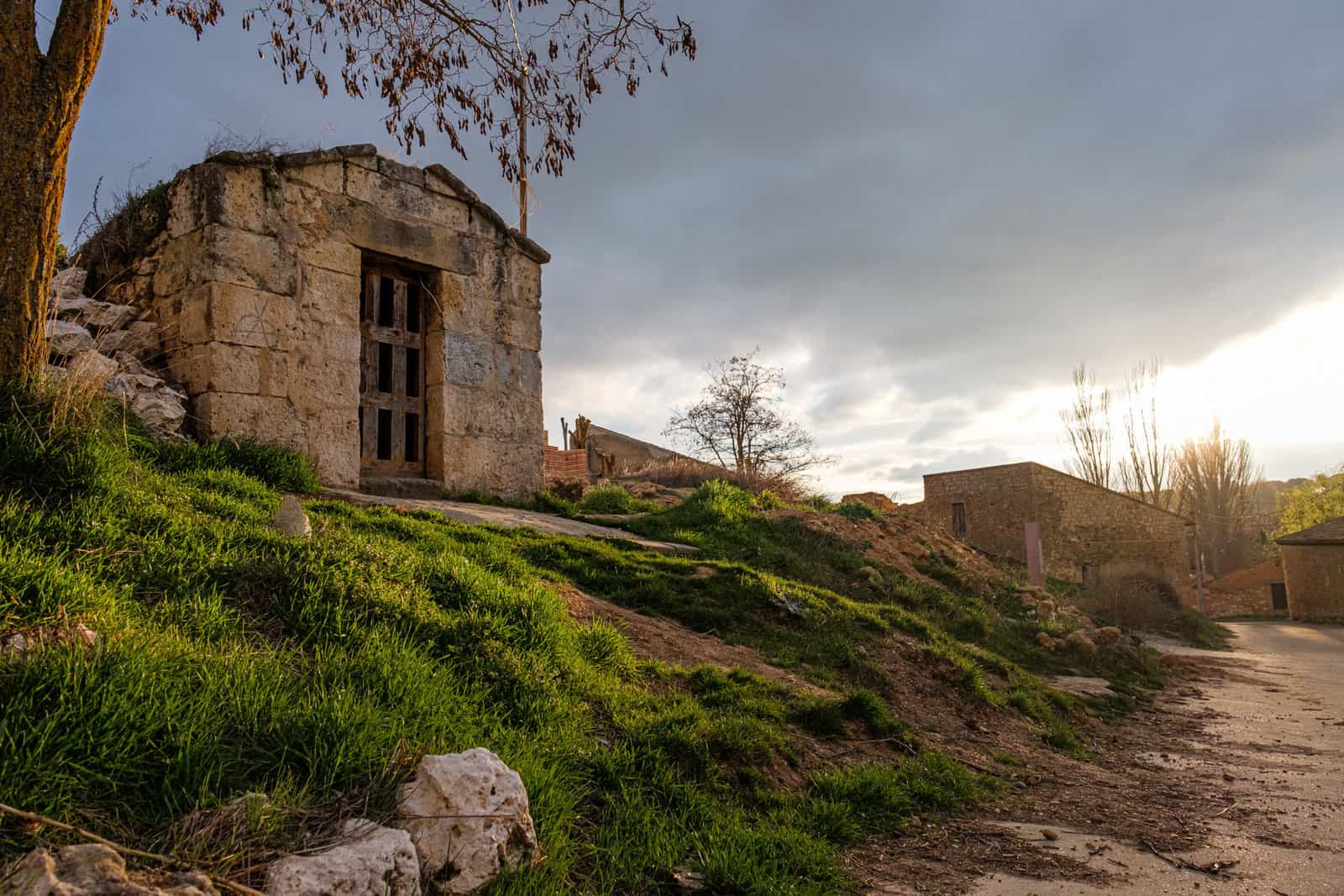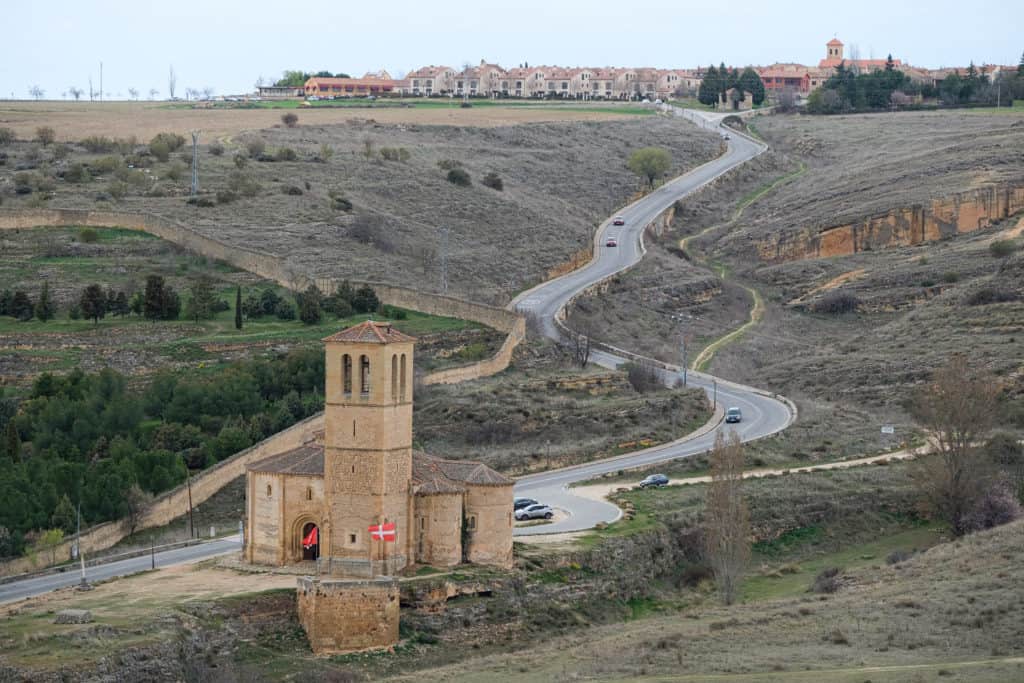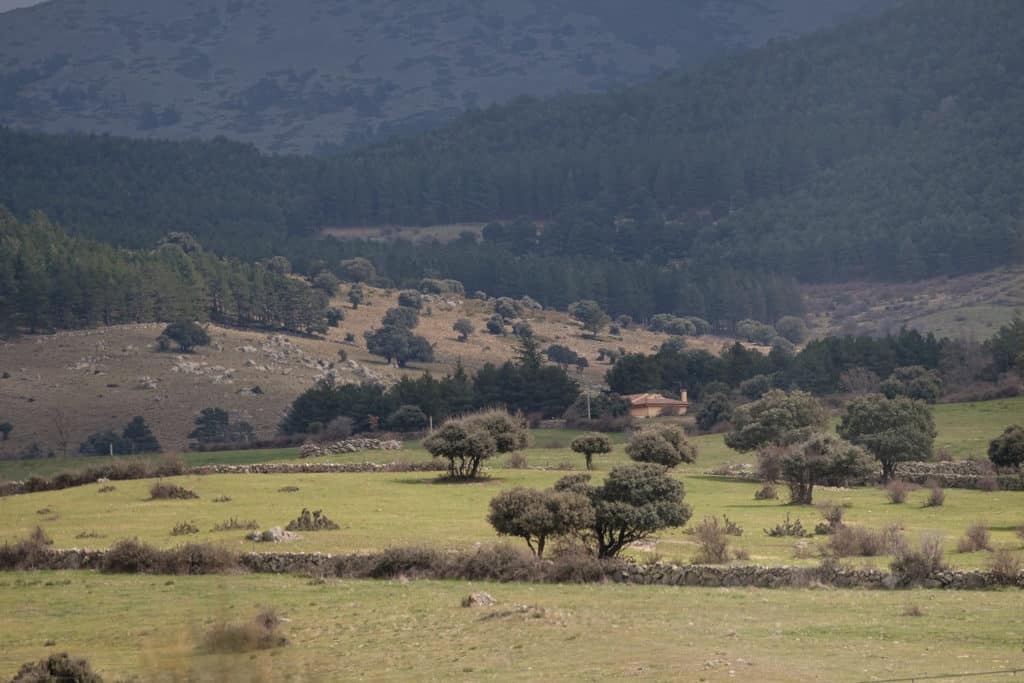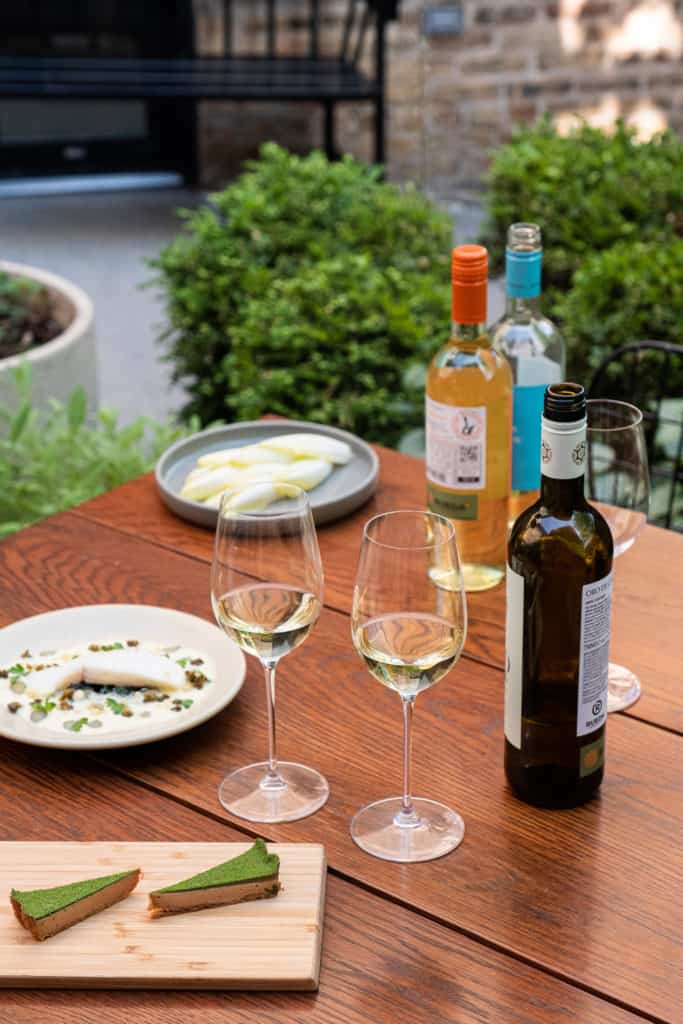
It is often said that wine is life, but in Ribera del Duero and Rueda, it is more. Wine represents the roots in the soil and the root of the soul. Each glass made here represents the area’s ancient past and its slow, steady march toward modern winemaking.
Castles dominate the landscape in these regions, a nod to the days of territorial control and protection, and they also serve as symbolic guards over the centuries-old vines along with the “newer” ones – 40 years old or more. So too the more recently planted ones. The old vines wear the signs of age with their thick burly trunks, stalky vines, and orderly separation from their vineyard brethren. They are not to be trained and trestled. Instead, each stands alone, reaching deep for the water and nutrients below and striving toward the sun despite their short stature.
While many of these vines are old, and some of the small-production wines are still made with decidedly bare-bones equipment in underground warrens of uneven stone stairways, dusty passages, and makeshift spaces for wedged-in barrels, that is just one side of winemaking in Ribera del Duero and Rueda. Both regions are also very much modern with their “starchitect-“ designed wineries, sophisticated winemaking techniques, and hallmarks of wine country almost anywhere in the Old World — restaurants, cheese shops, boutiques, museums, churches, and castles. That’s why these two relatively undiscovered wine regions are ripe for wine-loving visitors – still unspoiled yet rich in culture, food, and, of course, wine.

Both regions claim Rutas del Vino – routes that take thirsty visitors deep into the areas where wineries and vineyards are alive and welcoming, where wine tasting is encouraged, and an education in the regional wines is the result. These special “rutas” also bring visitors to castles, monuments, spas, and even the Duero Nature Trail – a trail that extends the length of the region’s namesake river – a length of 750 kilometers. Tackling that might be a lot for one trip but a worthy excuse to return again and again.
In Rueda, the predominant wine is Verdejo – a white grape that sports tropical and citrus flavors and aromas and a range of textures and sophistication depending on the winemaker’s intent. It may be oaked or it may not. It may have been in contact with the spent yeast cells called lees for added creaminess or it may be bottled and sold with none of that. Verdejo is as complex as the region itself – expressions of old and new side by side, each as individual as the people that make it.
The city of Valladolid in the region of the same name is the primary seat of government for the Castilla y León region. It is the largest city in the Rueda region and a perfect hub from which to base a wine country visit. Even before heading out to the vineyards though, you may wish to dip into the region’s history by paying a visit to the Royal Palace, home to the kings in the 1600s. Queen Isabella, “La Catolica” and her husband, Ferdinand of Aragon, were also from these parts, and their palaces, as well as the place of the queen’s death, still exist to prove it.
If cheese and other expertly chosen gourmet food products is your thing, then you can’t do better than Mesetarios in the city of Valladolid. Spectacular cheeses, both local and further afield, as well as olive oils, jams, honey, and pretty much anything you’d need for a wine country picnic are all there. Or heck – visit a cheese factory where it’s all made. Check out La Quesera for some sheep’s milk cheeses.
A few yards away from Mesetarios is a little bit of Paris in Spain. Built-in the late 19th century, the enclosed Pasaje Gutiérrez pays a nod to the Belle Epoque with its stone pavers and ceiling glass ornamentation including a central glass dome. This glorious pass-through is also a natural stopping point for a retro aperitif. A Rueda Pálido or Rueda Dorado, a traditional, oxidized style of fortified wine resembling a dry Sherry answers the call.

But really, this and the outlying areas that make up the Rueda Denomination of Origin is all about wine. While it’s best to make appointments at most wineries ahead of time, the wine roads of the region are worth the drive alone. Passing through this wine country is a varied experience – old vines, new ones, hawks soaring above, and small rustic villages peppered throughout. The high-altitude Meseta plateau that is the foundation of the entire region is flat, offering expansive views even if more rustic than wine regions in most other places.
The four main areas that comprise Rueda and Ribera del Duero are Valladolid, Soria, Burgos, and Segovia. Each offers its own tourist attractions (the Roman aqueduct in Segovia is especially breathtaking, and while you’re there, a visit to the traditional restaurant, Casa Duque, founded in 1895, is a must), and each is its own gateway to wine country.
In the heart of Burgos is the city of Aranda de Duero. This is the center of Ribera del Duero and was recently named European Wine City of 2022 – an honor bestowed on just one European city each year. That Aranda de Duero is this year’s recipient says a lot, not just about the city but also about the fact that Ribera del Duero is firmly entrenched on the world stage.
The wine is, of course, the main draw in these parts, but the spas in the region round out the experience like none other. Abadia Retuerta, a five-star luxury resort, has its own winery as does the nearby Bodegas Arzuaga, where the wines are as beautiful as the accommodations. Both offer winery tours, relaxing spas, and world-class dining.
As for the area’s wine, Ribera del Duero is Tempranillo country and home to some of the most famous red wines in the world. Like Rueda, many of the vines are old, and on the surface, look like they wouldn’t produce a leaf let alone clusters of grapes. But they do, and the refined wine in the glass is proof.


It stands to reason that the beloved dish of the region – lechazo or baby lamb – goes spectacularly well with the local wine. Nearly every restaurant offers a version of it, though many also offer the porcine equivalent known as cochinillo. Both are meltingly tender, rich, and beg for both the Old World, rustic styles of Tempranillo that are made in the region and equally, and the refined, smooth, rich, dark, and multi-layered New World styles also made there.
Other dishes you might find on the table here are empanada atún (tuna), Spanish tortilla, jamón Ibérico, morcilla (blood sausage), and cocido – a rich pork-based stew that’s served in courses beginning with the broth and rice and ending with meat and vegetables. Not insignificantly, the Madrid-originated dish happens to go exceptionally well with both Verdejo and Tempranillo.
Although the entire Ribera del Duero region would take weeks to see, if nothing else, the half-hour trip from Aranda de Duero to Peñafiel is a must. There, you’ll find the famous Peñafiel castle, famed in part because of its sheer size – 660 feet long – and also the fact it houses a wine museum – a worthwhile two-fer.
The Peñafiel area also has several wineries open to visitors. Among those is the utterly spectacular Bodegas Protos. Situated in the shadow of the castle just down the hill, this architecturally stunning winery has a tasting room to match. The wines in the bottle further the theme by showing immense style, finesse, flavor, and sophistication. Protos produces Rueda Verdejo and, of course, Ribera del Duero Tempranillo (often called Tinta del Pais in these parts), and you would be hard-pressed to find finer wines than these.
Whether Rueda or Ribera del Duero – preferably both – these are the wine countries that should top every wine lover’s destination list. Not only do the regions stand out as bridges between ancient history and the modern day, but they also bring to the fore the fact that some of the most thrilling winemaking happening in the world is happening right there. Much of it can be gotten for prices far less than you’d pay on this side of the Atlantic, which means the only thing you need to remember when you visit is to bring an extra suitcase for the wine you will unquestionably be buying along the way.




